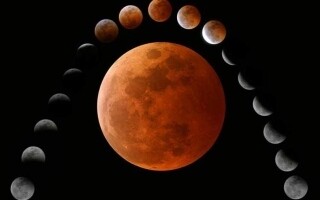
On the night of March 14, 2025, the world will witness a total lunar eclipse, which can be observed in its entirety from two American continents. At the same time, it will not be visible from Asia and the eastern part of Africa. The beginning of this astronomical event will be visible in the west of Africa, including Mauritania, Morocco, Algeria, Tunisia, and the west of Libya.
The moon will begin to enter the shadow of the Earth on the evening of March 14, at 03:57 GMT. The total eclipse begins at 06:26 AM, reaches its peak at 06:59 AM, and concludes at 10:00 AM. During the lunar eclipse, the Sun, Earth, and Moon will be aligned in a straight line, with the Earth positioned between the Sun and the Moon, resulting in the Moon falling into the Earth's shadow and ceasing to be visible.
During the total lunar eclipse, the Moon does not disappear completely due to the fact that some light from the Sun scatters in the Earth's atmosphere and appears directed towards the Moon, giving it bright hues, such as yellow, orange, or red. The color of the Moon during the eclipse is an indicator of the cleanliness of the Earth's atmosphere: the more polluted it is, the darker the color of the Moon becomes. Sometimes, in rare cases, the Moon may completely disappear, as occurred during the eclipse on December 9, 1992, due to a volcanic eruption of Pinatubo in the Philippines in June 1991.
Notably, the beginning of the eclipse may not reveal a noticeable change in the brightness of the Moon during the first 45 minutes because the Moon is in the initial phase of entering the penumbra, and during this time the Earth does not obscure enough sunlight for it to be noticeably unobservable to the naked eye. At the entrance of the Moon into the umbra, it may be possible to observe the eclipse on the left side of the Moon's disk.











